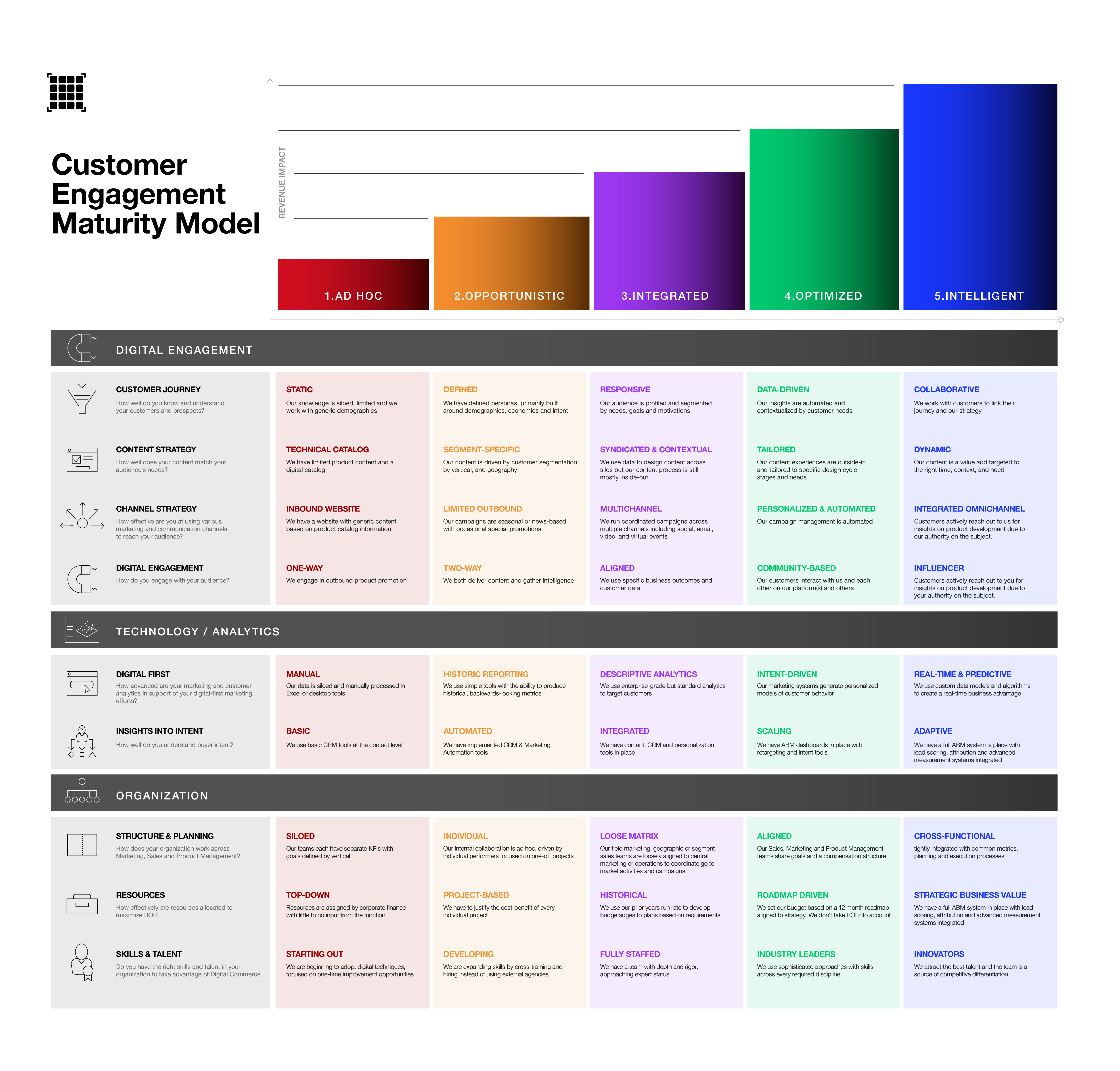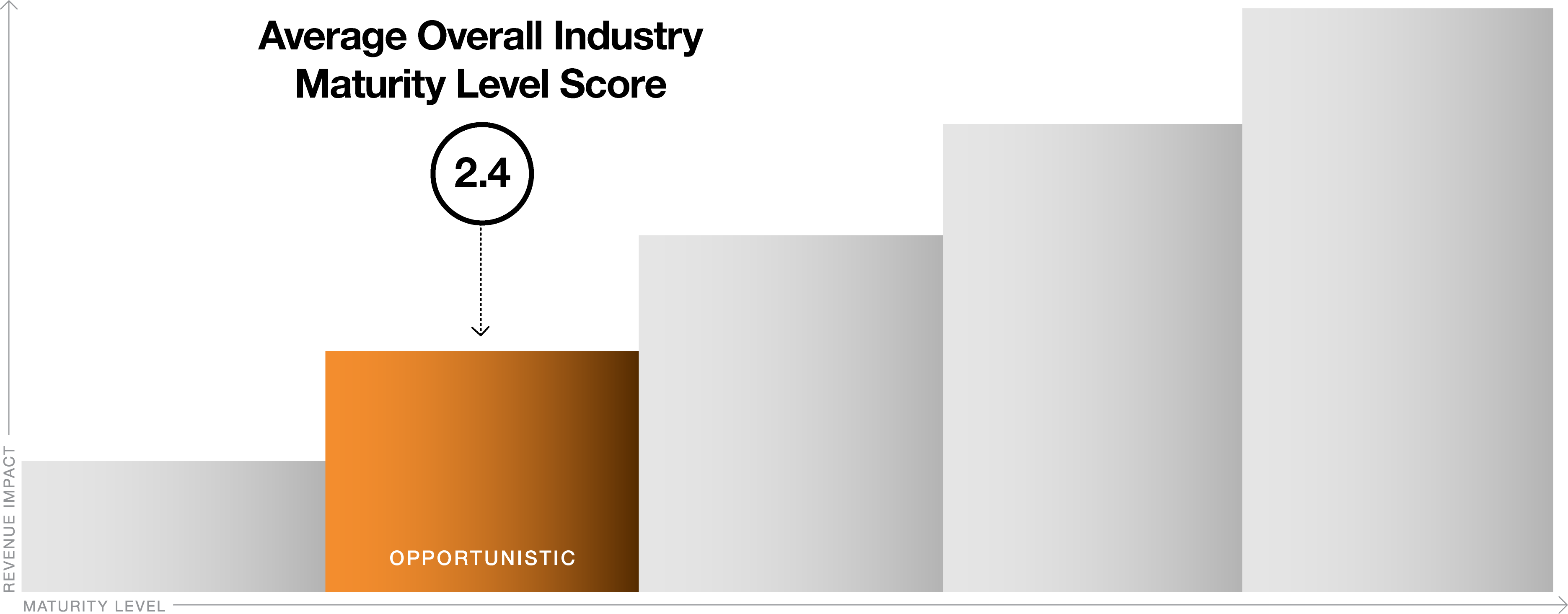- Solutions
ENTERPRISE SOLUTIONS
Infuse new product development with real-time intelligenceEnable the continuous optimization of direct materials sourcingOptimize quote responses to increase margins.DIGITAL CUSTOMER ENGAGEMENT
Drive your procurement strategy with predictive commodity forecasts.Gain visibility into design and sourcing activity on a global scale.Reach a worldwide network of electronics industry professionals.SOLUTIONS FOR
Smarter decisions start with a better BOMRethink your approach to strategic sourcingExecute powerful strategies faster than ever - Industries

Compare your last six months of component costs to market and contracted pricing.

- Platform
- Why Supplyframe
- Resources
Editor’s Note: Supplyframe recently commissioned a survey conducted by Conceptial in March of 2021. The goal of the survey was to gauge where the global electronics industry stands in relation to their ability to connect with customers across every channel. The survey collected feedback from marketing and sales leaders across 180 global electronics distributors and suppliers. We presented the Survey findings as part of an Infographic, which mapped these results to a maturity model between level 1 and 5. The industry average was 2.4, revealing numerous opportunities for improvement. The following article presents the Supplyframe Customer Engagement Maturity Model, introducing it as a tool to inform roadmaps for global electronics organizations.
Reaching and engaging with customers across the electronics value chain is a process that is constantly shifting and evolving. With customers preferring a digital, self-service approach, it’s not shocking that the events of 2020 propelled this inevitable future into the present. Now, more than ever, the industry must transform to meet these new expectations.
While recent data has shown that the industry is ripe for innovation and improvement across all aspects of customer engagement, many organizations lack a true roadmap or a deep understanding of where they stand. Today, we introduce a first look at the Supplyframe Maturity Model, and examine how this powerful tool can be used to identify where your organization stands, and the potential roadmap that leads to smarter, more effective, and profitable engagement with your customers.

An Overview of Supplyframe’s Digital Customer Engagement Maturity Model
The Digital Commerce Maturity Model from Supplyframe allows organizations to evaluate their digital commerce preparedness in 3 areas:
- Digital Engagement – How well do you know your customers, and how effective are you at reaching and delivering value to them?
- Technology & Analytics – How do your current systems support a digital-first approach to connect with customers across digital channels, and in what ways do you capture and interpret buyer intent?
- Organization – Where do you stand on the organization’s structure, skillset, and resources in regards to delivering effective digital commerce?
The electronics industry has been fairly stagnant in its approach to embracing a digital transformation over the last two decades. While other B2B industries have adopted their own maturity models and standardized solutions, electronics component suppliers and distributors have changed very little in their approach to marketing and sales efforts.
With 2020 accelerating a digital shift, and a highly technical audience expecting a tailored, self-service, digitally enabled experience, the pressure is on for our industry to kickstart its digital transformation. To address this challenge, we have developed a Customer Engagement Maturity Model that evaluates various dimensions required to deliver superior customer experiences and drive revenue.
As an organization that sits in the middle of the buy and sell side of the electronics value chain, we here at Supplyframe have a unique perspective and expertise to provide insights into the procurement and engineering audience.
As a discussion tool, and a way to frame your organization’s unique roadmap, the various levels of the Supplyframe Maturity Model each provide a point of perspective and outline how to develop systems and business processes that can dramatically improve customer engagement.
Our observations, which are also supported by our most recent survey results, point to a situation across the industry where organizations are harnessing aspects of a digital buyer journey, but lack a true roadmap to bring all the various elements together across capabilities, data, and business structure. As a result, the industry is largely reactive instead of proactive, and missing numerous opportunities to drive higher margins and profits as a result of a stronger understanding and level of engagement with their customers.
Why is The Industry Average at Level Two on The Maturity Model?

Current survey data from over 180 electronics distributors and suppliers shows that the industry falls at an average of 2.4 on the Supplyframe Maturity Model.
Here is a breakdown of what this metric looks like in regards to the three major elements of the Supplyframe Maturity Model:
Customer Engagement
While there are organizations who would be categorized in a higher level on this model (between level 3 and 4), the average maturity score based on our recent survey results points to an industry that has been stuck in many ways for the last two decades. With the shift towards digital and face-to-face meetings off the table in the near-term, businesses cannot rely on their outdated methods of reaching customers.
Meeting the expectations of today’s customers requires organizations to provide personalized content designed with the end user in mind, delivered across multiple channels.
Growth has been slow, but after the events of 2020, the digital transformation required to enable this sort of engagement is once again at the forefront of everyone’s minds.
Technology & Analytics
Also important is the need for electronics distributors and suppliers to approach their audience with the proper mindset. Engineers, and procurement professionals are a highly technical audience compared to others in the B2B and B2C space. There’s a need to address this fact in both the measurement of success metrics, and in the approach your marketing takes.
The lack of true data or intelligence is also a limiting factor. Organizations are flying blind and missing opportunities to engage with emerging design cycles because they have no visibility into this aspect of the global picture, and even if they did, they don’t have the capability to act quickly and position themselves as a competitor among other options for their customers.
Organization
The industry’s current approach to customer engagement is no longer sustainable. Many organizations that would be categorized within the 1-2 level range are working in siloed structures where marketing and digital strategy departments are isolated from one another.
Furthermore, teams working in IT and content marketing are also separated from web development and brand marketing in terms of budgeting. Budgeting in and of itself is a concern as well. While most B2B Enterprises allocate 14% of revenue to marketing, our survey results found that 85% of respondents are only spending 3% or less on their own marketing efforts.
Of course, spending is only a part of the full picture. Higher stages of maturity in customer engagement also require a commitment of time and a dedication to an organization structure that breaks down silos and enhances cross-functional collaboration.
As such, the Supplyframe Maturity Model represents an ideal starting point for self-assessment and as a catalyst for a deeper conversation on how your own efforts stand towards the digital transformation of customer engagement.
What Comes Next?
As an organization positioned in the center of the industry, with solutions to the buy and sell side of the electronics value chain, Supplyframe is uniquely qualified to connect the dots between the B2B Enterprises and their electronics industry audience.
With the introduction of the Supplyframe Customer Engagement Maturity Model, we are excited to bring this value tool to the greater electronics industry. Future content surrounding the model will dive deeper into the specific categories and levels within, offering actionable insights on how organizations can rise to higher levels of maturity.
Dive deeper into the maturity model with part one of our three-part series on The Design-to-Source Buyer’s Journey.



